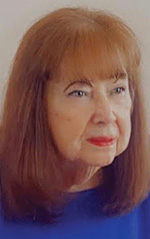Through the Rearview Mirror: The 1970s Reform of Women’s Role in Diplomacy
A participant recounts the beginnings of women’s quest for career equity five decades ago.
BY MARGUERITE COOPER
It is helpful in moving forward to look back to see where we have come from as we seek a diplomatic service reflective of the American population and values. This article will briefly summarize what near ground zero looked like 50 years ago for women and their struggle to end the discriminatory policies and practices that had restricted their status and roles in the foreign affairs agencies. It is based on my own experience as a woman Foreign Service officer at the State Department, as well as interviews conducted at the time by others and held in Radcliffe College’s Schlesinger Library on the History of Women in America.
The 1960s and 1970s were a time of ferment in America. The country was torn by conflicts over civil rights, the Vietnam War, and political issues, including the so-called “liberation” of women. The leadership and personnel systems at the Department of State and other federal agencies reflected some protective but outworn assumptions about “proper” gender roles. That put women’s rights and responsibilities on the reform agenda, as described by Barbara Good in her January 1981 FSJ article, “Women in the Foreign Service: A Quiet Revolution.”
Where We Were

Mary Olmsted, the first president of the Women’s Action Organization, receiving the Woman of Courage award in 2010. The National Women’s Political Caucus (NWPC) presented the award in honor of Ms. Olmsted’s leadership of WAO. At right, NWPC President Lulu Flores; at left, the author, Marguerite Cooper, then NWPC vice president.
Courtesy of Marguerite Cooper
It seems ludicrous now, but when I joined the Foreign Service in 1956, women made up only 4.6 percent of FSOs and 1 percent of the senior ranks; most women FS employees were secretaries. Women FS employees of all ranks and positions were expected to resign upon marriage. They were not hired if they had dependents, and their allowances were lower than their married male colleagues. There was only one career woman ambassador. Many women Civil Service employees were in dead-end jobs. Discrimination on the basis of sex (as well as race, color, religion, and national origin) had been outlawed in federal employment in 1967 by President Lyndon B. Johnson, based on the Civil Rights Act of 1964.
For women FSOs, gender bias seriously harmed their hiring, assignments, performance evaluations, and promotions. At the time, the quota for women and Black people was one hired every other year, according to the transcript of Alison Palmer’s 1971 equal employment opportunity hearing. Their assignments were limited by the State Department due to the widely held beliefs that they would be looked down on in the Middle East and Asia and face machismo in Latin America, danger in Africa, and compromise behind the Iron Curtain. For more details, see my article, “Twenty Years After the ‘Women’s Revolution’: A Personal View,” in the February 1991 FSJ.
Women FSOs’ advancement was also severely limited by their assignment largely to the consular cone and some administrative functions, with few senior positions available. In the U.S. Information Agency (USIA), women were clustered in the cultural function, not information. At the U.S. Agency for International Development (USAID), women officers abroad, largely in nutrition and home economics functions, were the first to go when cuts were made. None were in policy or supervisory positions in Washington, D.C. Few, if any, women were chiefs of mission or in program direction in the three agencies, and their promotions were substantially slower than for men.
The Foreign Service Staff Corps (FSS) was largely made up of women secretaries and male communicators. Secretaries served everywhere, but the ban on marriage left few chances for professional advancement. They had to share their housing, work unpaid overtime, were often without diplomatic status, and were frequently excluded from official functions. They felt disrespected both as professionals and as people.
Adding to the discontent were the wives of FSOs, especially of younger and lower-ranking officers, who chafed at the barriers to their working overseas, the tradition of being subject to the demands and whims of the senior wives at post, and the fact they were evaluated as part of their husband’s efficiency reports.
Stirrings of Reform
The first shot across the bow in the fight for FS women’s equality was the grievance filed by FSO Alison Palmer in 1968 with the Civil Service Commission. Palmer charged discrimination when her assignments to three African posts were refused or abridged by the ambassadors. It took three years, but she won her case in 1971 on appeal.
In early 1970, State’s Deputy Under Secretary for Management William Macomber oversaw a program to craft a more flexible and responsive State Department, with parallel systems for sister agencies—USAID and USIA. Thirteen interagency task forces looked at a broad range of personnel and management issues, held large open hearings from April through June, and drafted recommendations for change.
The previously cited FSJ articles by Barbara Good and myself addressed the development of a group at this time intent on seeking redress of issues of concern to women employees and families. An Ad Hoc Committee on the Status of Women (later the Women’s Action Organization, or WAO) sought relief at first through the reform task forces.
At a critical Aug. 26, 1970, meeting of the ad hoc group with Macomber and his staff, we found him to be sympathetic to the career aspirations of women. Although the deputy under secretary denied our request for separate women-focused task force subcommittees, he invited the group to make recommendations for “serious consideration.” As Macomber said at the time: “It was stupid to require women employees to resign at marriage: if the woman employee intended to continue her service, the department would attempt to find appropriate assignments for both employees. If that was not possible, one could take leave without pay for the duration of the other’s assignment.”
The ad hoc group got to work to provide data-driven evidence of discrimination with 28 recommendations for policy changes. None of them appeared in the task forces’ final report, “Diplomacy for the 70s.”
Over the next year or two, WAO maneuvered within the system on some of their desired changes in personnel policy: for instance, an end to the ban on marriage and dependents for women; an end to discrimination in FSO assignments; and adjustments for the staff corps in their allowances, housing, and opportunities for upward mobility.
The Personal Dimension

State Department Deputy Under Secretary for Management William Macomber meeting with Women’s Action Organization members in 1972. Facing the camera are Macomber (next to podium); his assistant, Gladys Rogers (to his left); Barbara Good, from State; Elaine Fry, from USIA; Idris Russell, State WAO vice president; and Viessa Jackson, USAID WAO vice president.
FSJ, February 1991
The personal dimension in this progress was critical. Moving from statements of support from Macomber and his Special Assistant for Women’s Affairs Gladys Rogers, the group followed up to draft implementing policy statements. Because staff was busy with the task force–required changes, WAO drafted changes to the implementing regulations for review, editing, and publication. As Rogers said, the ad hoc committee provided “a coherent, timely, integrated approach.”
Macomber himself said that the WAO approach on these early issues was practical, and he appreciated our willingness to express thanks for work accomplished. WAO’s broad membership of men and women, Foreign Service and Civil Service, grew to 1,000 in all three agencies, led in the beginning by an FS-1, Mary Olmsted.
Much has been written about the discontent of employees’ wives. Briefly, it was taken up in 1971 as an issue in the Secretary’s Open Forum, then called the Open Forum Panel (OFP), following the backlash to a 1970 policy statement restricting the demands senior wives could make on others. That statement had been drafted at the Foreign Service Institute’s wives seminar chaired by Dorothy Stansbury.
Richard Williamson led an OFP committee that focused on the legal status of wives in negotiations with Macomber and other senior officers for a policy statement that included appreciation for spouses’ contributions through their representational and charitable activities. But dependent spouses were declared to be “independent persons,” not government employees, and thus unable to be ordered to take on duties or included in their employee spouses’ efficiency reports.
Other issues of concern to spouses abroad were the ability to work and family support. Tandem couples predominantly included a secretarial spouse who would be able to continue her career under the new guidelines. But others sought work abroad, some at missions on a part-time, intermittent, or temporary basis.
While I was president of WAO (1976-1978), a group of spouses sought WAO’s help with a host of family concerns they wanted to take to Director General Carol Laise. These early efforts led to creation of the Family Liaison Office (now the Global Community Liaison Office) and the spouses’ skills bank, led by Hope Meyers and Cynthia Chard, respectively. For more information, see Married to the Foreign Service: An Oral History of the American Diplomatic Spouse by Jewel Fenzi with Carl L. Nelson (1994).
A Turning Point
The fight for women in the Foreign Service took a serious turn in 1976 when Alison Palmer filed a class action lawsuit charging sex discrimination of FSOs and Foreign Service applicants.
In her March 2016 FSJ article, “Foreign Service Women Today: The Palmer Case and Beyond,” former FSO Andrea Strano credited the lawsuit with causing State to either cease the unfair practices or make progress on such problems as out-of-cone and initial cone assignments for women FSOs, the lack of stretch and deputy chief of mission assignments for women, the disproportionate promotion of men, discriminatory hiring practices and processes, and the reclassification of awards. But this remarkable progress took 34 years to accomplish, on appeal, bit by bit, as described in Palmer’s 475-page autobiography, Diplomat and Priest: One Woman’s Challenge to State and Church (2015).
At the time, WAO agonized over whether to join the suit. We believed that the agencies discriminated, and despite the advances made in 1971-1972, there was much left to be done to achieve an equitable system. A good deal of the problem with discrimination in initial grade and cone assignments, efficiency reports, and future potential was the result of subconscious attitudes. The lawsuit could document such discriminatory actions, based simply on statistical analysis, much of which WAO had collected.
A year later, in 1977, the WAO board and I, personally, filed a class-action lawsuit. It was, as Barbara Good has written, a controversial decision: WAO lost some members. The reasons for joining were several. Following Macomber’s reassignment, WAO had less access to senior ranks. Worried about “not lowering FS standards,” Director General Laise was much more skeptical of our mission, and her staffs were less responsive.
The State Department’s affirmative action program was focused on bringing in professional women from the outside to fill senior positions. A program to fast-track promotions or assignments of outstanding mid-level women career officers was perceived as “reverse discrimination” and never got off the ground. It appeared to us that management was counting on a “trickle-up” result so as more women FSOs were recruited at the bottom, over time more would make it to the senior grades. We were afraid that continued bias in efficiency reports, promotions, assignments, and the fewer senior positions in the consular and administrative cones would result in a continuation of women’s proportionally lower rank and status.
The class action lawsuit was certified, and a D.C. court consolidated the two cases but rejected WAO’s standing as a plaintiff. With the addition of up to seven other plaintiffs, we provided the basis for covering a broader range of personnel issues than would have been true for the Palmer case alone. The Palmer-Cooper lawsuit made a huge difference for women FSOs and probably also provided spillover effects benefiting both the Foreign Service staff corps and the Civil Service. WAO continued its educational programs to raise employees’ awareness of opportunities for upward mobility and improvement in job skills. In congressional hearings we testified for a more diverse, inclusive, equitable, and accessible Foreign Service, one that is more family friendly.
We have come a long way in 50 years but always with more work to be done to reach a diplomatic service that reflects the best in America’s population and values. What we know is that the initial breakthroughs for women in foreign affairs required the complementary efforts of management programs, pressure by employee groups, and court action. The department’s current modernization efforts will keep that search for equality going.
When sharing or linking to FSJ articles online, which we welcome and encourage, please be sure to cite the magazine (The Foreign Service Journal) and the month and year of publication. Please check the permissions page for further details.
Read More...
- “Women in the Foreign Service: A Quiet Revolution” by Barbara J. Good, The Foreign Service Journal, January 1981
- “Twenty Years After the ‘Women’s Revolution’: A Personal View” by Marguerite Cooper, The Foreign Service Journal, February 1991
- “Foreign Service Women Today: The Palmer Case and Beyond” by Andrea Strano, The Foreign Service Journal, March 2016
- “Making It Work: Conversations with Female Ambassadors” Interviews conducted by Leslie Bennet, The Foreign Service Journal, July-August 2017




